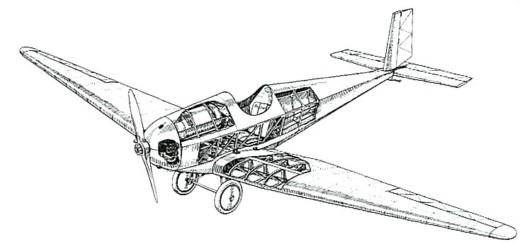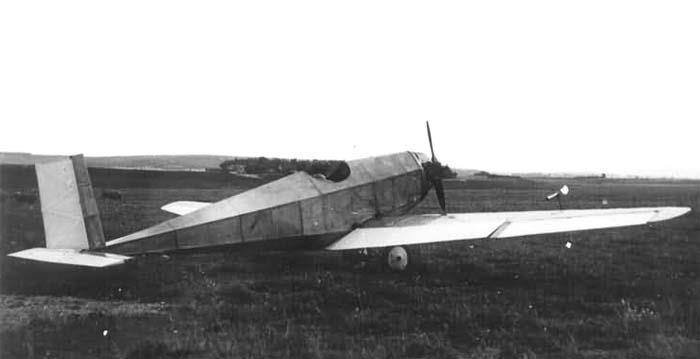| Type |
Single seat sportplane |
| Engine |
1 Bristol Cherub |
| Dimensions |
Length 5.40 m, height 1.50 m, span 9.60 m, wingarea 7.90 m2 |
| Weights |
Empty 140 kg, flying weight 340 kg |
| Performance |
Max. speed 145 km/h, cruising speed 120 km/h, service ceiling 850 m, range 850 km |
| Type |
Werk.Nr |
Registration |
History |
|
31 |
D-1206 |
First flight in Aug. 1927, pilot Theo Croneiβ. Took part in the Sachsenflug 1927 (Pilot E. von Conta). Crashed on the last day of the competition, 4th of Sept.. In spite of this it ended on the second place. |
|
35 |
D-1221 |
Took part in the Sachsenflug 1927, pilot Theo Croneiβ. Won the competition. Crashed 8/8 1928, pilot Werner von Langsdorff, during landing at Augsburg |
The M.19 was developed to compete in the Sachsenflug competition for single-seat lightplanes, to requirements set down by the Deutsche Versuchsanstalt für Luftfahrt (DVL). It was Messerschmitt's first low-wing cantilever monoplane, though the fuselage and empennage were clearly related to that of the high-wing two-seat M.17 of 1925. This fuselage had five main longitudinal members, four defining the lower rectangular part and a raised, central dorsal member that made the upper cross-section triangular. These members tapered strongly together towards the tail unit, where the fuselage was very slim. The rudder and fin assembly wae noticeable for being extremely rectangular, higher than wide and dominated by the rudder; the fin chord was very narrow and amounted to little more than a streamlined rudder post. It had a single-axle undercarriage with a tailskid.
The M.19 was entered into the Sachsenflug competition, flown by Theo Cronweiss and won both the technical prize and the overall award, winning Messerschmitt 60,000 RM which he invested in BFW.
Only two were built, but the low-wing, aerodynamically clean M.19 lead to a series of two-seat developments: the successful M.23, the M.27, the M.31 and the M.35.











